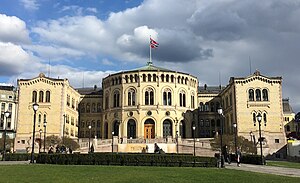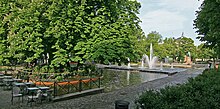
Grünerløkka is a borough of the city of Oslo, Norway. Grünerløkka became part of the city of Oslo in 1858. Grünerløkka was traditionally a working class district; since the late 20th century the area has increasingly undergone gentrification. Although it is located in the East End, it is more expensive than other parts of the East End.

Ullern is a borough of the city of Oslo, Norway.

Bergen Cathedral School is an upper secondary school in Bergen, Norway. Located in the city centre, next to Bergen Cathedral, the school has about 850 students, 95 full-time teachers, and 5 administration personnel, including the headmaster, Lise Hårklau Holsen.

Karl Johans gate is the main street of the city of Oslo, Norway. The street was named in honor of King Charles III John, who was also King of Sweden as Charles XIV John.

Birkelunden is a park placed centrally in the Grünerløkka borough of Oslo, Norway. It is formed as a rectangle, more or less like a city block.
Frognerkilen is a bay in the inner Oslofjord of Norway, east of the Bygdøy peninsula.

John Colletts plass is a light rail tram stop on the Oslo Tramway.

Johan Christian Heuch or J. C. Heuch was a Norwegian bishop in the Church of Norway and politician for the Conservative Party.
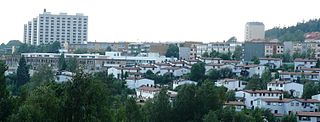
Linderud is a neighborhood in Bjerke borough, Oslo, Norway. The area originally formed part of the estate of Linderud Manor.

Solli plass, pronounced /su:li/ or /suli/, /plas/ or /pɽas/, also called Lapsetorvet, is a square in Oslo, Norway, located southwest of Slottsparken and the Royal Palace.

7. juni-plassen is a square in Oslo, Norway.
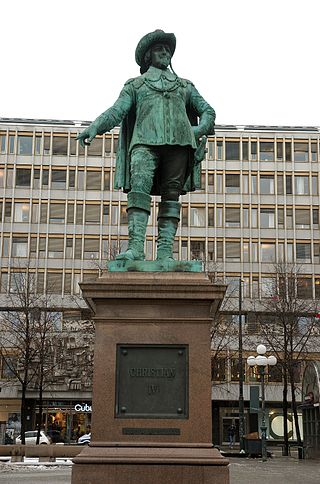
Stortorvet is a square in Oslo, Norway, located west of Oslo Cathedral.

Wessels plass is a square in Oslo, Norway, located south of the Parliament of Norway Building.

The Vigeland Museum is a museum dedicated to Gustav Vigeland in Frogner, Oslo. It is located outside Frogner Park, which includes the Vigeland installation with sculptures by Gustav Vigeland. The museum is part of Oslo municipality's cultural department.

Bredtvet is a neighborhood in the borough of Bjerke in Oslo, Norway.

Olaf Ryes plass is a square and park placed centrally in the Grünerløkka borough of Oslo, Norway. It is more or less square in shape.

Schous plass is a square in the southern part of the borough of Grünerløkka in Oslo, Norway.
Nyt Tidsskrift is a former Norwegian literary, cultural and political periodical issued from 1882 to 1887, and with a second series from 1892 to 1895. The periodical had contributions from several of the leading intellectuals of the time, including later Nobel Literature Prize laureate Bjørnstjerne Bjørnson, later Nobel Peace Prize laureate Fredrik Bajer, the writers Alexander L. Kielland, Jonas Lie, Arne Garborg and Hans Aanrud, proponents for women's rights Camilla Collett, Gina Krog and Hagbard Emanuel Berner, and painter Erik Werenskiold.

Studenterlunden is a park in the city center of Oslo, Norway.
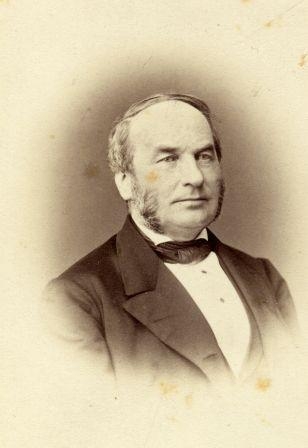
Fredrik Glad Balchen was a Norwegian deaf teacher.
